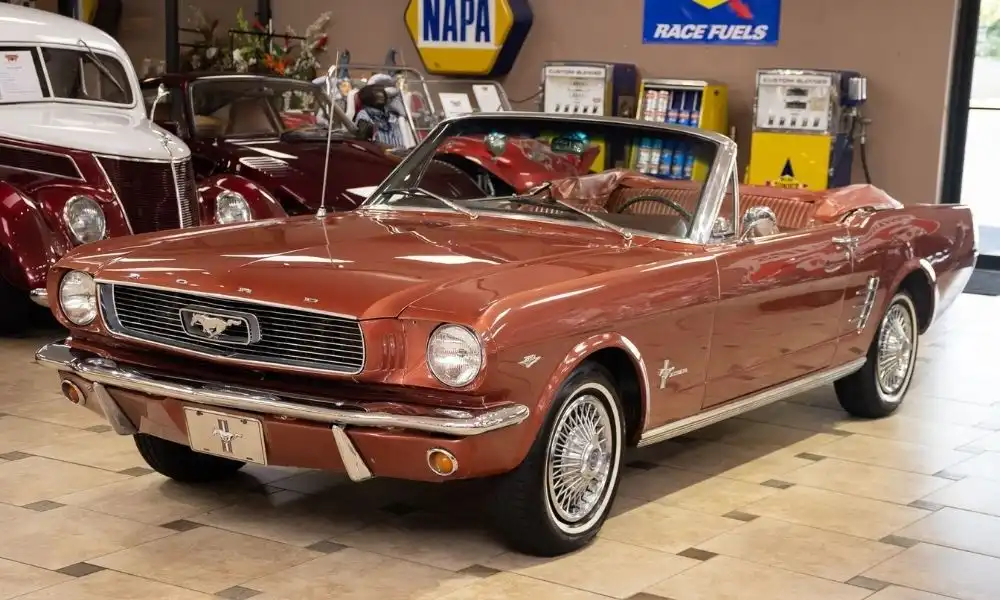Restoring a classic car is a thrilling and rewarding endeavor, but choosing the right project car is crucial to ensuring the time, effort, and money you invest pay off. While any vintage car can hold sentimental or nostalgic value, some models are more worthwhile to restore due to their performance, rarity, and potential value once fully restored.
In this blog, we’ll dive into the top five classic cars worth restoring, considering factors like parts availability, overall cost, and the car’s lasting appeal. Whether you’re a seasoned restorer or a first-time project enthusiast, these models will provide a solid foundation for a successful restoration.
1. Ford Mustang (1965-1973)
The Ford Mustang is an iconic American muscle car that remains a fan favorite for restoration enthusiasts. Its blend of style, performance, and accessibility makes it one of the top classic cars to restore.
-
Why It’s Worth Restoring: The Ford Mustang is known for its strong aftermarket parts availability, making it relatively easy to find replacement parts at reasonable prices. Plus, it has a large and passionate following, which means restoration support is abundant, whether through online communities or professional resources. The 1965-1973 Mustangs, in particular, hold considerable value, especially models like the Shelby GT350 and GT500, making them a great investment.
-
What to Look For: When hunting for a Mustang to restore, be sure to check for rust in the frame, rocker panels, and undercarriage, as these are common areas of concern. Given that the Mustang is popular, you’ll likely find plenty of options, but ensure that you choose a car with solid bones—especially the body and suspension components.
Why it matters: With its rich history, strong demand, and vast availability of parts, restoring a Mustang offers a good balance of affordability and potential return on investment.
2. Chevrolet Camaro (1967-1969)
The Chevrolet Camaro is another legendary American muscle car that continues to turn heads. Known for its aggressive styling and powerful engines, the 1967-1969 models are among the most sought-after by collectors and restorers alike.
-
Why It’s Worth Restoring: The Camaro’s combination of style and performance makes it a perennial favorite among classic car enthusiasts. These models, particularly the Z/28 and SS versions, have a strong value in the collector market. With plenty of aftermarket parts available and an active restoration community, a Camaro restoration is relatively straightforward.
-
What to Look For: As with the Mustang, rust is a significant issue for older Camaros, especially in the floor pans and trunk. Make sure the body is in decent shape and check for damage to the rear quarter panels and undercarriage, which are critical areas for rust. Original engine and transmission configurations will also help with the car’s value if they’re intact.
Why it matters: The Camaro’s striking design and performance make it a rewarding car to restore. Its historical significance and strong following ensure a good return on investment when the restoration is complete.
3. Porsche 911 (1965-1989)
The Porsche 911 is a highly sought-after classic sports car known for its performance, precision engineering, and iconic design. Restoring a Porsche 911 can be a bit more challenging due to its complexity and high parts costs, but the rewards are definitely worth it.
-
Why It’s Worth Restoring: The Porsche 911 holds its value well, particularly the early models. With its unique rear-engine layout and timeless styling, the 911 is always in demand, whether for enthusiasts looking for a rare classic or for collectors wanting an iconic piece of automotive history. Moreover, the robust aftermarket parts availability and thriving restoration community make it a great choice for restoration.
-
What to Look For: Pay close attention to the car’s body and frame, as rust is a common issue with 911s, especially around the floor pans and rear wheel arches. The engine and transmission should also be inspected carefully, as repairs on these components can be costly. Make sure to check the condition of the suspension and the integrity of the rear-end components, which are unique to the 911.
Why it matters: A well-restored Porsche 911 from this era can fetch a premium price in the classic car market. Its renowned build quality and performance make it a rewarding project for those who are up for the challenge.
4. Chevrolet Corvette (1953-1967)
The Chevrolet Corvette is an all-American sports car with a long history of performance and elegance. The early models, particularly from 1953 to 1967, are especially valued for their historical significance and unique design elements.
-
Why It’s Worth Restoring: The Corvette’s combination of style, performance, and historical significance has made it one of the most desirable cars to restore. The first-generation Corvettes (1953-1962) and mid-year models (1963-1967), especially the Sting Ray, hold high value among collectors. These cars have strong aftermarket support and offer plenty of restoration opportunities, making them a good investment for enthusiasts.
-
What to Look For: Look for original parts, especially the engine, transmission, and chassis. Many early Corvettes had fiberglass bodies, so check for cracks or damage. Rust can also be an issue with older Corvettes, particularly around the frame and suspension components. Given the rarity of the early models, finding one with original documentation can significantly increase the car’s value.
Why it matters: The Corvette’s legendary status in American automotive history, coupled with its strong market value and enthusiast demand, makes it an ideal car for restoration.
5. Ford Bronco (1966-1977)
The Ford Bronco has made a massive comeback in recent years, but the classic models from 1966 to 1977 still hold a special place in the hearts of vintage car collectors and off-road enthusiasts. This rugged, iconic SUV offers a unique restoration experience that combines classic American engineering with a strong sense of adventure.
-
Why It’s Worth Restoring: The Ford Bronco is one of the most desirable 4×4 vehicles from the 1960s and 1970s, particularly the early models. These cars have seen a surge in value, especially the 1966-1977 editions, due to their popularity among classic off-road enthusiasts. The Bronco’s timeless design, versatility, and growing demand in the vintage SUV market make it a great restoration project.
-
What to Look For: As with many older cars, rust is a common issue, especially in the frame, floors, and rear quarters. The Bronco’s off-road heritage means that some vehicles might show signs of heavy wear, so make sure to inspect the suspension and drivetrain components closely. Finding a solid frame and intact body panels is key to restoring a Bronco to its full potential.
Why it matters: The Ford Bronco’s renewed popularity, combined with its off-road legacy, makes it a highly sought-after classic SUV. Its increasing value ensures that restoring one is a smart investment.
Conclusion
Restoring a classic car is more than just a hobby—it’s a passion that can bring an iconic vehicle back to life, all while preserving automotive history. Whether you’re drawn to muscle cars like the Ford Mustang and Chevrolet Camaro or looking to restore a unique sports car like the Porsche 911 or Chevrolet Corvette, each of these models offers its own rewards. By choosing a car with a solid foundation, abundant parts availability, and a strong market value, you’ll ensure that your restoration project is not only enjoyable but also a worthwhile investment.
With the right car, skills, and resources, you’ll be able to bring a piece of automotive history back to life—and potentially see a significant return on your investment when the restoration is complete. Happy restoring!

